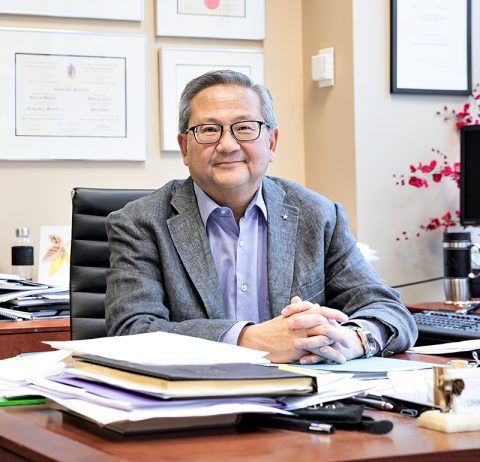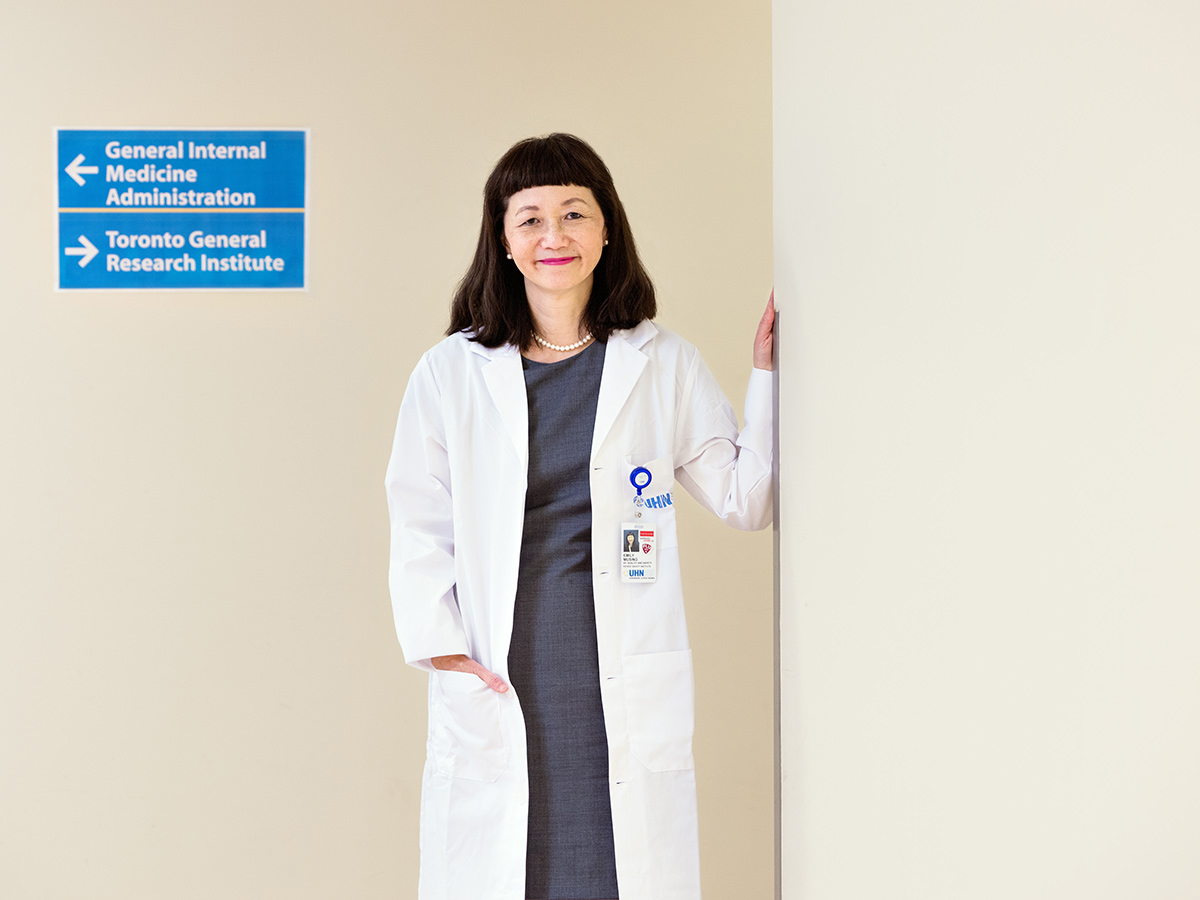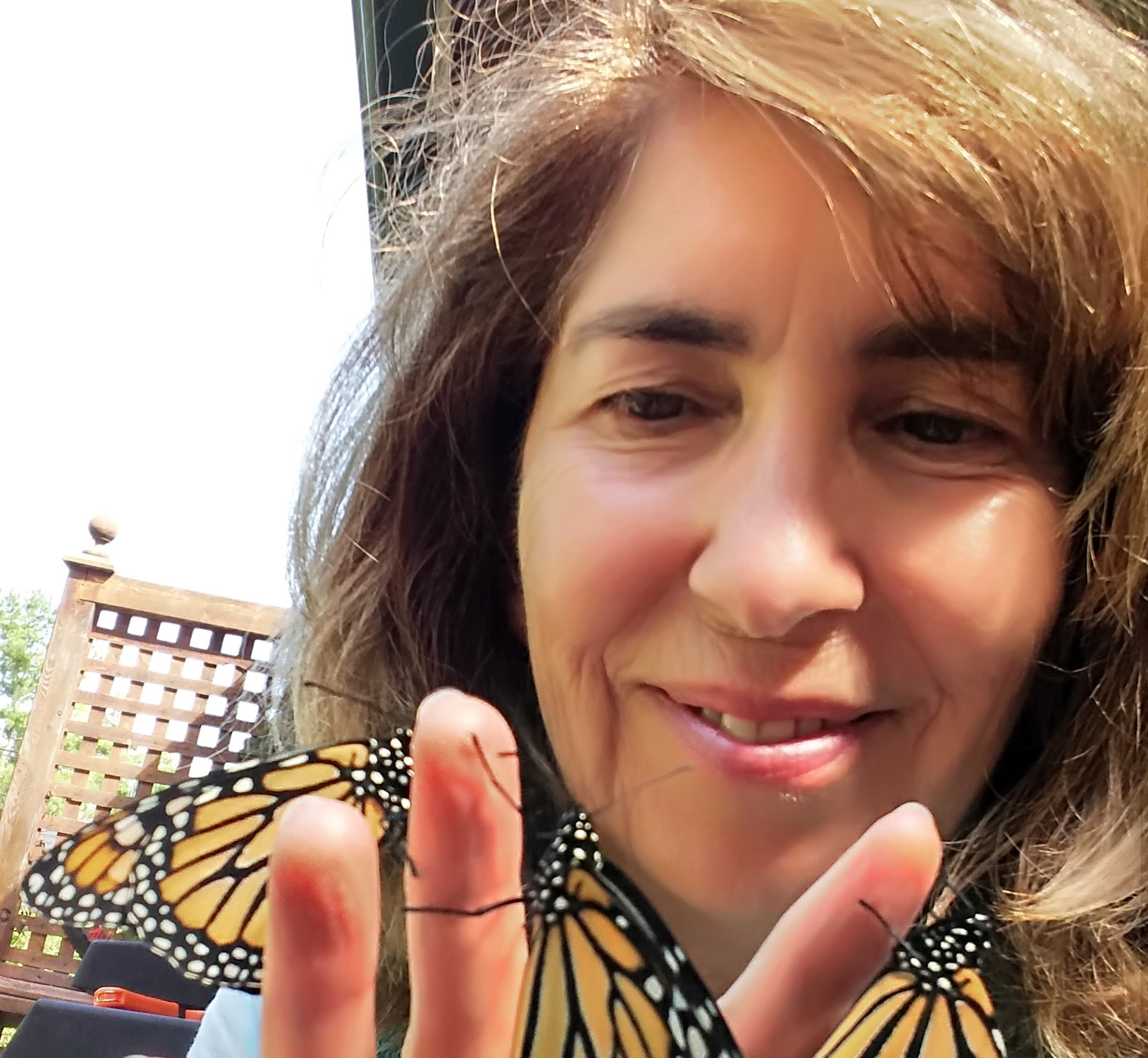As a health-care professional, Emily Lap Sum Musing was well aware that mistakes can – and do – happen in hospitals. But the extent of the problem didn’t hit home for Musing, the chief patient safety officer at Toronto’s University Health Network (UHN) and a professor in U of T’s faculties of Pharmacy and Medicine, until it affected her own father, Yin Ling Wong.
Wong was an independent and energetic senior when a complication from his home dialysis treatment for diabetes sent him to an Ontario hospital in 2012. He was put on antibiotics and told he’d be home in two weeks. But while in hospital he contracted C. difficile, a serious gut infection, and was put in isolation. And that’s where he caught yet another infection, the same upper respiratory one as the patient in the next isolation room. The most likely way for him to have contracted it was from one of the hospital staff, says Musing.
Her father was eventually moved to a rehab wing. But a few days later, when Musing (BScPhm 1983, MHSc 2003) visited him, he mentioned that he felt pain around the site where his abdominal drain had been. Musing saw that the area was obviously infected and looked as though it hadn’t been cleaned in days. She ran to the staff, saying, “Something needs to be done about his drain site!” The response: “What drain site?”
Musing was distressed by the lapses in hygiene and communication that led to her father’s three hospital-acquired infections and extended his stay by several months. And she realized that those three infections weren’t inevitable; they were all potentially preventable.1
“This really opened my eyes to the importance of safety in any health-care environment,” she says. “When your dad is in there and you can’t be with him 24 hours a day checking everything yourself – and many people wouldn’t even know what to check if they’re not from a health-care environment – you really depend on those individuals in that organization to know what they’re doing.”
Hospital errors have become so common that many of us may not even realize they’re errors.2 The rare and dramatic cases of surgeons amputating the wrong leg or leaving a clamp inside a patient make the news, but thousands of other, more mundane errors do not. We think of them as merely the cost of doing business. We assume that very ill and vulnerable people in hospital are simply prone to unfortunate events – infections, falls, bedsores, adverse reactions to medications – and we may not recognize that thousands of these are preventable.
UHN and the Hospital for Sick Children have decided that this situation must not continue. In 2015, each organization took the bold step of implementing a system-wide program called Caring Safely. UHN – the health-care and medical research organization that includes Toronto General Hospital, Princess Margaret Cancer Centre, Toronto Western Hospital and several Toronto Rehab sites – partnered with Sick Kids to roll out the program to leaders and staff at all of their locations. Caring Safely has one overarching, highly ambitious goal: to reduce to zero the number of preventable harmful events at these facilities, which see more than one million patients a year.
Ross Baker (PhD 1982), a professor at U of T’s Institute of Health Policy Management and Evaluation who specializes in patient safety, co-authored a groundbreaking study in 2004 that first exposed the problem in Canadian hospitals. He then replicated the study in other adult and pediatric hospitals and home care settings, here and in several communities in Europe and South America, and found similar results everywhere: between eight and 12 per cent of patients experience unintended injury. “The reality is that patients are being harmed on an ongoing basis, and because of this they’re spending longer time in hospital and recovering slower,” Baker says.3
Dr. Peter Pisters, UHN’s outgoing president and CEO, puts it more bluntly. He says patients trust that hospitals are functioning at a high level of safety. “But if most patients were to really understand the inside-baseball aspects of this,” he says, “they would be horrified.” Every year between 17,000 and 30,000 Canadians die from hospital harm in large and small hospitals across the country. “It’s like a jumbo jet crashing every week,” Pisters says.
Out of the Shadows
The first step forward was the toughest: acknowledging the problem. Hospital errors have long been hidden in the shadows because clinicians fear losing their jobs or status, leaders fear litigation and hospitals fear losing public or private funding. Historically, errors often went unacknowledged, or else they were documented through the cumbersome process of incidence reports – many of which were ignored, lost in red tape or dealt with in secret. So for UHN and Sick Kids to shine a spotlight on the problem made for a courageous and not particularly popular move. “If you’re the only hospital saying there are safety issues, the tendency is for the public to think, ‘Oh my gosh, there’s only a problem in this hospital!’” says Musing. “Certainly the Ministry of Health does not want to go out there and cause panic by saying there’s a big safety issue. No one wants to touch this with a 10-foot pole.”
But UHN and Sick Kids did. To kick-start a new transparency, Sick Kids produced a video in which staff talked about mistakenly causing harm to patients. UHN’s leaders chose to fess up, in videos and interviews, about their own worst errors. Dr. Charles Chan, the interim CEO and president of UHN and a professor of medicine at U of T, admitted that when he was a young doctor, he prescribed the wrong chemotherapy to a patient. “It meant he was given at least two drugs he did not need, and it delayed his real chemo by at least a month,” Chan recalls. “Did it result in a lesser chance of him receiving a cure? We don’t know. I still feel terrible.”
In the second year of her nursing career, Joy Richards, UHN’s vice-president, patient experience, and chief of health professions, gave the wrong dose of a concentrated codeine medication. A senior nurse had written “5 CCs” in large loopy letters, which Richards (BScN 1981, MScN 2000) misread as “50 CCs” and gave that amount to the young female patient. It was only when the staff did a narcotic count that night that the error came to light. “And that’s when I had this awful feeling in the pit of my stomach that I was actually going to kill her,” Richards says. She didn’t sleep a wink that night and called the unit every hour to check on the patient. The young woman survived. But Richards says, “Even when I’m telling the story I feel kind of sick, all these years later.”

In 2002, Pisters was riding high as an accomplished surgeon at the largest cancer facility in the world, the University of Texas MD Anderson Cancer Center in Houston (to which he returned in December as president). But after a complex operation he realized a surgical sponge had been left in the patient. He had to re-operate on the man the next morning to remove it. In the U.S. with its private-payer system, Medicare does not pay for extra hospital days or procedures resulting directly from an obvious medical error. The surgeon or the facility must pay. (There’s no similar financial penalty in Canada, but hospital errors cost us all, because patients who should be going home are taking up beds.) Pisters was devastated and humiliated. He worried about the repercussions for the patient – who, as it turned out, suffered no long-term harm from the extra 20-minute procedure – but also for himself, his family and the hospital. “The provider can become the second victim,” he says. “You feel tremendous responsibility, you feel guilt, you second-guess your decision-making.” But Pisters also realized he had a role to play in preventing mistakes, and he’s been the driving force behind Caring Safely.
The UHN leaders’ public admissions of errors gave permission for others to acknowledge safety issues. As Dr. Brian Goldman (MD 1980), an emergency physician and broadcaster, wrote in the Autumn 2017 issue of U of T Magazine, “If you weeded out all the health professionals who make errors, there wouldn’t be anybody left.”
Bundles and Huddles
The next step in the UHN/Sick Kids Caring Safely program was to focus on several common preventable hospital-acquired conditions, including C. difficile; central line infections (a central line is an IV line inserted into a large vein, usually in the neck or near the heart); adverse events from medications; surgical site infections; pressure ulcers (also called bedsores); and falls. UHN also looked at workplace safety for staff, since a worker there is harmed every 1.5 days, and chose three areas of focus: musculoskeletal injuries, workplace violence and falls. “Not every error is preventable but the vast majority are,” Musing says.
A “bundle,” or set of practices, has been designed for each one of these, detailing the specific steps to prevent an incident. For instance, preventing surgical site infections requires strict procedures by many people: the medical secretary who gives the pre-op instructions to the patient to bathe the day before the surgery, the assistant who preps the surgical area, the operating room nurses and technicians who drape the patient, the surgical team who starts and stops preventive antibiotics and makes sure the patient is warmed to a certain temperature before the stitches are done, and the post-op and home care team. “Each part is seemingly a small piece,” says Chan (MD 1981), “but if you don’t do all of them, it’s a setup for a surgical site infection.”
Another new feature is daily safety “huddles.” These take place in every patient care unit. Staff meet briefly to talk about any issues from the previous 24 hours and concerns about the next 24. “Before we rolled out these huddles, it was actually kind of embarrassing,” says Chan, “because even a well-set-up restaurant has a huddle before they open the doors, where they talk about issues or daily specials. But at a hospital, people just basically show up for work.” Now at UHN — and at Sick Kids — they talk and share concerns. Daily huddles take place at all levels, from individual units up to executives. Information now flows quickly and concerns keep getting escalated up until they’re dealt with. Richards says, “Clinical nurses tell me that, without exception, the best thing UHN has done in the past 10 years is develop these huddles, because for the first time they see that their concerns are not only heard but acted upon.”
Someday you’ll be a patient yourself, and when you’re in that situation, you will want to be safe.”
Caring Safely has borrowed principles from organizations such as airlines, nuclear power plants and chemical facilities, where reliability is paramount. These industries operate in risky environments but have extremely low rates of mistakes because of their adherence to strict safety protocols and their emphasis on safety as everyone’s responsibility. When a hospital begins its high-reliability transformation, the rate of serious safety events paradoxically goes up, due to better recording and reporting of mistakes. But after it peaks, it falls dramatically. Nationwide Children’s Hospital in Columbus, Ohio – one of the largest pediatric hospitals in the U.S., which began its transformation a decade ago – has seen its rate of “serious safety events” fall from one every 11 days to one every 183 days. UHN’s rate is fluid right now, says Musing. But SickKids, which began its transformation several months earlier than UHN, has already seen a drop of almost 70 per cent. Soon UHN units will begin to display the number of days without a serious event.
Changing the Culture
It’s one thing to put policies and procedures in place. It’s quite another to change the entire culture of an organization. “The culture change of our Caring Safely initiative is the one that’s the hardest and will take the longest,” Musing says, “but it’s the one that will have the greatest impact.”
Patient safety relies on teamwork, collaboration and mutual respect. But hospitals have traditionally been hierarchical “caste systems,” says Pisters, with physicians at the top. As residents, “they’re often trained alone, so you get a very autonomous, hierarchical, often self-interested individual who finds it very challenging and unfamiliar to work in teams or even speak up and challenge authority themselves. So there’s a gradually evolved culture of fear.”
Historically a nurse would not question a physician’s order and would not speak up if she saw a physician walk into a patient’s room and not wash his or her hands. “Either you’d get yelled at or humiliated, or you deferred to them because you’d think, ‘Well, maybe I don’t know what I’m talking about,’” says Richards. “We need to change this culture. It’s not helpful.” In addition, hospitals have often dealt with errors by using blame and shame, focusing on an individual instead of on a flawed system.
Patients and family members have been lowest in the hierarchy. In 2010, Katie Harris was in Toronto Western Hospital, recovering from spinal cord surgery. The surgeon had told her not to let anyone touch the tube that was draining excess fluid from her spine, or she’d risk serious infection and possibly another surgery. But a nurse disregarded Harris’s repeated warnings and carelessly dislodged the tube, causing spinal fluid to leak all over the bed. “I was terrified for days that I’d get an infection,” Harris remembers. Luckily she was OK, but she says, “I felt the nurse didn’t listen to me. It created a traumatic experience that didn’t need to happen.”
To change this hierarchy into a more just culture where everyone is listened to, the Caring Safely program is supporting all of UHN’s and Sick Kids’ 25,000 leaders and staff through educational programs. The 1,200 leaders are participating in training modules designed specifically for them, and so far almost all of Sick Kids’ staff and 60 per cent of UHN’s have had a three-hour training session (many more will complete the training early in 2018) that gives them both the authority to raise their concerns and the exact words to use: “I have a safety concern” or “I need to ask a clarifying question.” Everyone now must wear a reminder card listing safety behaviours and tools to prevent errors. And Harris is now one of more than 150 patient partners involved in committees and focus groups at the two organizations.
Culture change is slow, admits Chan, the interim CEO. “We have to kick and push some of my docs to go into the training sessions. They may say, ‘I know all of this.’ Well, no, you don’t. What we are trying to get into your mindset is, we’re all in this together.” The Caring Safely program may need another three to five years to fully transform UHN, but Chan has no doubt that eventually, even the strongest resisters will be on board, due to a simple fact: “Someday you’ll be a patient yourself,” he says. “And when you’re in that situation, you will want to be safe.”



